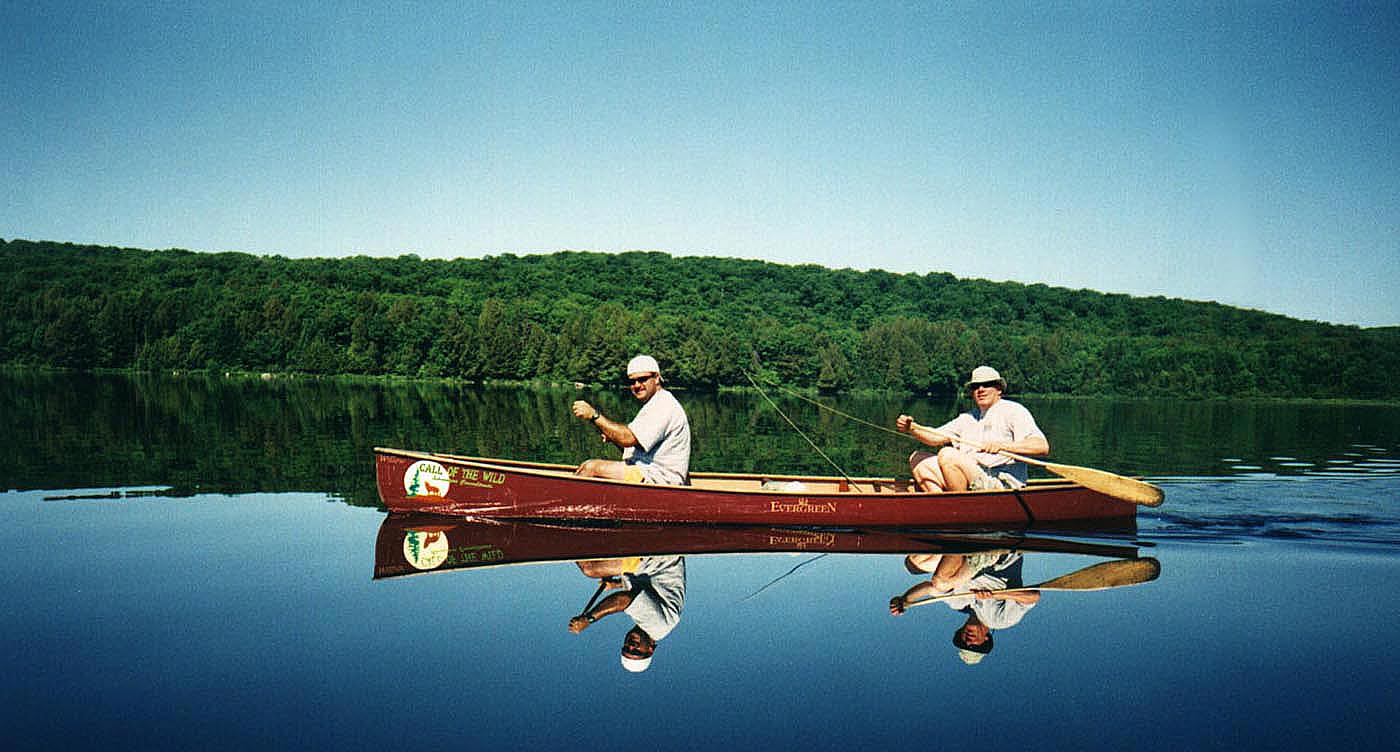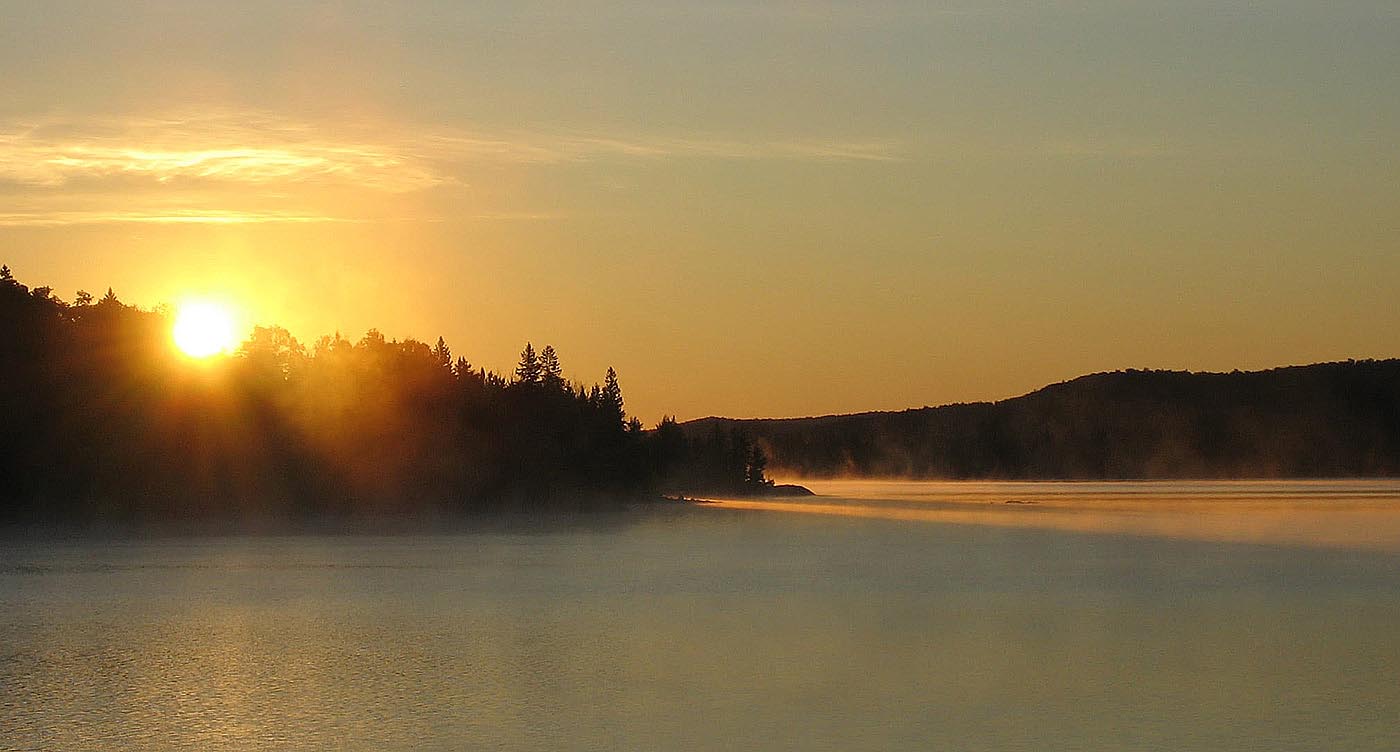BRING ON THE ANGRY BEARS
BRAVING ALL THAT THE CANADIAN WILD CAN THROW AT HIM, GAVIN BELL PADDLES HIS CANOE IN ONTARIO.
(Filed: 11/06/2005)
We had been warned about the bears. The good news was that they were black bears, smaller and less aggressive than grizzlies, and that they rarely attacked humans. The bad news was that sometimes they did.
We were camping in the Algonquin provincial park, a wilderness near Toronto three times the size of Luxembourg, with seemingly endless forests and an estimated 1,500 freshwater lakes. At the last count it had almost as many bears.
The thing to do was to make sure there was no food, or anything smelling of food, anywhere near your tent. Best to suspend it in a rucksack between trees, well out of reach.
And if push came to shove at close quarters, the recommended strategy was to make as much noise as possible and fight back.
This is easier said than done from inside a sleeping bag, which is where I was when a loud scampering woke me. I was still struggling with the bag zipper when the tent flysheet opened and a large, furry creature burst in. I yelled a profane command for it to go whence it came, which it did.
Minutes later it was back, but by then I was armed with a torch and a canoe paddle. I recognised a pair of hairy legs. They belonged to Tasman, an Australian shepherd dog belonging to our guide, Robin, who was making a nocturnal inspection of the camp.
Next morning I met another resident of the woods. It was just after dawn and I was watching mist drifting over a lake. I saw a ripple in the water. A few yards away, a beaver was swimming calmly towards me. I called a greeting and it stopped, regarded me inquisitively, then headed off.
In truth he had the place pretty much to himself. Camping in the park interior is strictly controlled: a permit system allows a maximum of nine people at designated sites, which are few and far between. The only way of getting to most of them is by foot or canoe.
Robin often has uninvited guests at his lodge on the perimeter of the park, in the form of timber wolves.
“Not too many people can say they have a resident pack of wolves by their door,” he says. Wolves are the top predators in the park, but Robin says they have had a bad press, and insists there has never been a documented case of anyone being killed by wolves in North America.
“Having said that, if you’re sitting outside a tent at night and you hear them howling nearby it can scare the piss out of you,” he says.
I’d like to see wolves, but I’d settle for a bit of hair-raising howling. Robin says there is a good chance, because it is spring when the wolf population usually doubles with new litters.
First, we have to learn to canoe like the Algonquin and Cree, who hunted and fished here for generations before the park was established as a sanctuary in 1893. The design of canoes hasn’t changed much, nor has the way of paddling them, and it is easier than it looks to stay afloat.
There are six of us in three canoes, including four women from youth hostels in Montreal and Toronto. Most of us rock our boats to varying degrees before learning how not to go round in circles.
Then we are paddling out of a creek into a lake surrounded by deep forests of maple and birch, the sun is glimmering on calm water and there is not a hungry bear in sight. There are moose, however, grazing on aquatic plants in the shallows.
Robin reckons they are the result of a horse being crossed with a cow. Their comical appearance is misleading – bears will take young moose, and wolves prey on the old and sick, but nobody messes with an adult with a full head of horns.
We pass them at a respectful distance, and go off to meet the devil. He is blood-red, a small man-figure with horns and tail, painted on the face of a 100ft cliff a few inches above the water line. Robin says he is a shaman, a man with the strength of animals, drawn long ago by a member of an Algonquin-speaking tribe, known in Canada as First Nation people.
In the quiet backwater, with no signs of civilisation other than our canoes, it is easy to conjure the image of a dark-skinned man with an eagle feather in his hair, carefully sketching the mystical symbol before paddling to a cluster of tepees among the trees.
There are vestiges of other early visitors – giant tree trunks trapped in shallows and rapids of rivers since they were felled by loggers harvesting great white pines for an expanding British economy in the 19th century. Waterlogged and half-submerged, the massive “deadheads” look as if they had sunk only yesterday.
That night Robin tries to summon wolves. He is good at mimicking the baleful howl, and his dog’s hackles rise, but the woods remain silent. So we sit around the fire and tell ghost stories.
Two of the girls work in a hostel in Ottawa that used to be a prison, and they tell of screams and other noises from its erstwhile death row on the eighth floor.
Robin recounts tales of Crazy Joe Blackfoot, a reclusive Indian given to murdering campers for trespassing on ancestral lands in the park. Joe is a figment of Robin’s imagination, but he gets the desired effect of making the girls jump when a racoon snaps a twig in the darkness.
To sit around crackling logs by night in a wild place is to understand the ancient primal attraction of fire. In the narrow circle of light there is warmth and safety, a few steps beyond lie darkness and danger. We find that calls of nature are best attended to in the company of good ol’ Tasman, the dog.
The park encompasses the headwaters of seven major rivers, but they tend to avoid each other, which means that stretches of portage are necessary.
This is where you walk on forest trails, balancing your canoe on your head and hoping that the bears don’t get a whiff of the food in your rucksack. In the event, the only predator we came across was a bald eagle that eyed our progress speculatively before swooping on a brown furry thing in the woods.
On our last night I awoke with a start. The camp was silent apart from a rustle of wind, and then in the far distance I heard it. A wolf howl, the quintessential call of the wild, echoing among the pines with a long, haunting melancholy. Curiously I felt drawn to it, rather than fearful.
It may have been a summons to a pack, or it may have been hunger. There are not enough deer and beaver in the Algonquin Park to feed all the spring wolf cubs. In theory they can live for 12 years, in practice few make it past their first birthdays.
One day I’ll see a wolf, and hopefully Tasman will be with me. If the pack gets too close, he can do his famous impersonation of a bear.
Algonquin Park basics
Getting there: The park is about three hours’ drive north of Toronto. Call of the Wild (001 905 471 9453, www.callofthewild.ca) has three-day canoe trips from C$430 (£182), including all meals and transfers from Toronto. Six-day packages including three days in an eco-lodge with hiking, swimming, fishing and mountain biking from C$750 (£317). Reduced rates for children and self-drive options.
When to go: The season is from mid-May to mid-October.
Testimonials
I had a great time in Algonquin Park with the Call of the Wild group. I still get emails & photos from the other campers. Our continuing enjoyment reflects proudly on your company.
Kevin Arthur
Australia
I would like to thank you for a great weekend, you are very good at what you do. Thanks again and we will definitely refer you to all my friends and co-workers.
Line McKeigan
Toronto, ON
I just wanted to send you a quick “Thank you” for the last weekend. It was way beyond what I expected it to be!! I think everybody had a wonderful time, I know I did!!!!
Elisabeth Eckhardt
Toronto, ON
I wanted to let you know how wonderful the 3 day Algonquin Park canoe trip was. We enjoyed the trip so much that we are considering booking a second 3 day trip in the fall.
Lauren Curtis
Toronto, ON
Thanks for the trip of a life time. I hope to have this experience again…
Teri Fonda
California, USA
Thank you so much for a wonderful few days at Call Of The Wild. The huskying and snow shoe walk were amazing and I would recommend the trip to anyone.
Lisa Chelton
Cayman Islands
I would like to thank you for a great weekend, you are very good at what you do. Thanks again and we will definitely refer you to all my friends and co-workers.
Line McKeigan
Toronto, ON
FOLLOW US ON FACEBOOK


